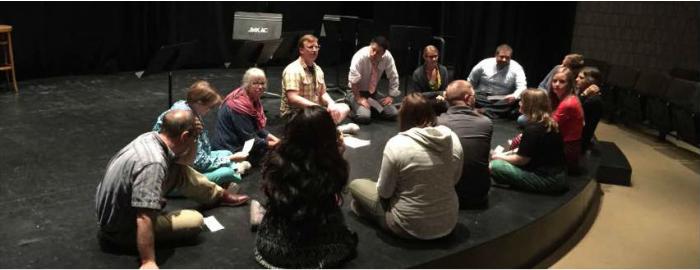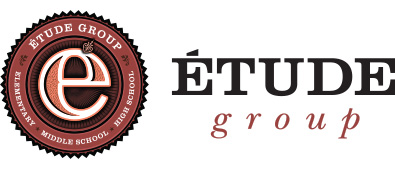
Conflict, unfortunately, is inevitable in a school setting. Through implementing restorative practices, The Étude Group plans to turn these potentially negative situations into opportunities for students to grow and learn.
Theater and film teacher Mike Hanlon attended a conference this summer through the International Institute for Restorative Practices to explore the practices the renowned institution has refined throughout the years and bring them to TEG.
According to Hanlon, restorative practices falls into two categories: proactive and reactive practices. “Proactive is a lot of stuff that we’re already doing in the schools,” he said. “It’s building community; it’s connecting students with each other as well as with staff; it’s making sure that everybody knows the people around them and that they’re happy to come into school every day.”
The reactive side is restorative justice. When proactive processes aren’t effective, reactive processes aim to “fix the issue,” Hanlon said.
Depending on the severity of the issue at hand, restorative practices can present themselves in two ways. For more minor infractions, a restorative circle will be held. “Restorative circles are structures that make a lot of sense to us as a school that values students as individuals and solving problems, not just making things punitive,” Hanlon said. “These were already happening naturally for us.”
In a restorative circle, each party, the offender and the impacted, have the opportunity to present their perspective on the issue while a facilitator guides the conversation and ensures that all parties are able to speak their part. “Everyone walks out of it hopefully feeling a little bit better and with a plan [to solve the issue],” he said.
For more severe issues, a restorative conference may be necessary. Restorative conferences have similar structures to circles, but with more structure. Each party is able to bring in a person to support them. “Both sides have someone to speak on their behalf,” Hanlon said. “That way hopefully it doesn’t feel like one side is ganging up on the other... In some of the models we saw, the support person ends up seeing the other person’s side as well, which makes it a little bit easier for the relevant parties to understand the opposite perspective as well.”
Hanlon said one of the main things he took away from the practices is the importance of asking the affected party what can be done to right the problem in their eyes. “I think that’s a shift in how we run things,” Hanlon said. “We’ve always looked at the person who’s done something wrong to figure out how they think they can repair the damage, but it makes a lot of sense to ask the other party that question. Otherwise you’re going to end up with a lot of guessing.”
Role-play activities throughout the conference helped Hanlon by giving him more hands-on experience with the practices. “The most useful part of it was when we got to do role-play activities,” he said. “The emotions that came out during the role-plays were genuine and it really tied everything together for me, like ‘Yes this really is going to work.’”
Hanlon also said it’s important to note that a restorative circle or conference doesn’t replace consequences. “The whole purpose of restorative practices is helping kids build that social understanding,” he said. “I think a lot of people go out of high school saying the main thing they learned was how to interact with other people. By and large, that happens by accident. That just happens naturally because that’s the age when you’re learning that stuff. If you’re using restorative practices, it’s really being intentional about teaching these things.”

